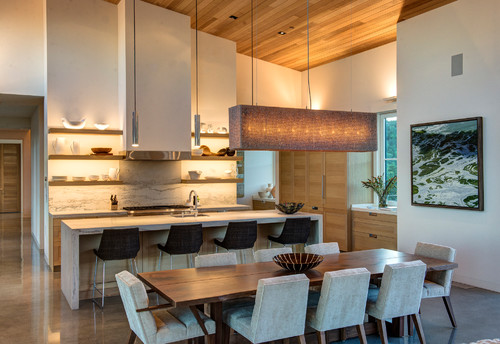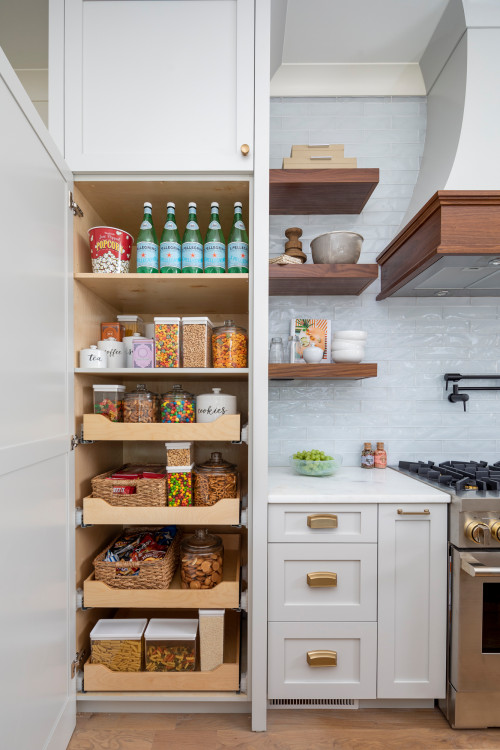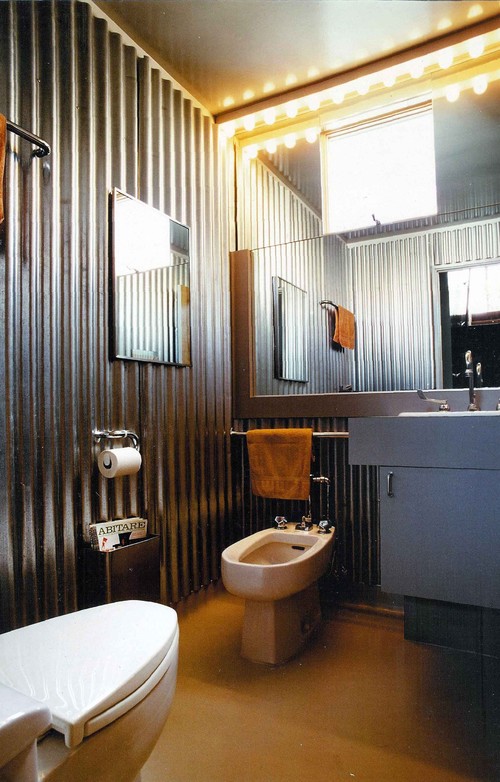Making your forever home as beautiful as possible is a no-brainer. But when it comes to improving accessibility, not every homeowner prioritizes with the future in mind. Mobility and functionality are key for comfortably aging in place. Plus, home design that factors for accessibility can also be beneficial when selling a house. The fix here, as you might have guessed, is called universal design. This is a plan that makes a home accessible and safe for anyone who lives there. Sometimes called inclusive design or design for all, this approach helps create an equitable environment that accommodates seniors or those with mobility issues. And fortunately, some of these tweaks don’t have to break the bank.
Curious about using universal design for your home? Read on to learn how easy it can be.
1. Better lighting
Nope, not all lightbulbs are created equal. “Good, quality ambient lighting is very important to anyone with vision issues or those of us who are starting to see our vision change,” points out Pamela O’Brien, interior decorator with Pamela Hope Designs. O’Brien has seen homes with missing or burned-out bulbs—or bulbs with different wattages and color temperatures, even in the same lamp or fixture. It all adds up to bad lighting, which is a big no-no when it comes to safety.
“The fix here is purchasing new, matching LED bulbs in a 3000K color temperature or upgrading existing recessed cans with LED retrofit kits,” she explains. And don’t forget smart home technology for your lighting. Having lights turn on and off automatically when you enter and exit a room adds an extra layer of home safety.
2. Lever handles
Ready for a tiny swap that greatly enhances universal design and makes infinite sense to anyone whose joints aren’t as nimble as they used to be?
“Install lever handles on cupboards, doors, cabinets, and faucets,” suggests Adam Graham, a home industry analyst with Fixr. Levers only need to be pushed down to open a door or turn on a tap, whereas traditional knobs require more twisting and dexterity of the hand and wrist. And if you’ve ever tried to open a door with a load of laundry or groceries in tow, you know that levers are vastly superior.
Does it matter how your utensils or cracker boxes are arranged?
It does if your motion is limited in some capacity. Jamie Gold, a wellness design professional and author of “Wellness by Design,” suggests cabinet organizers that pull out, pull down, swing forward, or roll. These mechanisms make the contents easier to reach. And the best part?
“These are fairly easy to add to an existing home,” Gold notes.
4. Bidets and grab bars
Bathroom design is critical when it comes to inclusive amenities in the home. Gold votes for bidets on toilets for “easier, safe hygiene and personal independence.”
And sitting down while washing is generally smarter when one’s balance isn’t reliable. “Try a shower bench or chair (which costs less) for seated showering,” Gold adds.
Several experts also mentioned grab bars in showers, tubs, and near toilets. “They don’t have to look like hospital ones, either. Grab bars today come in the same styles and finishes as your plumbing fixtures, so they’ll look integrated,” says O’Brien.
5. Open layouts and barrier-free entry
Allowing lots of space to maneuver is another hallmark of universal design. This starts with nixing stairs and creating a one-level, living layout. Barrier-free entry to rooms allows wheelchairs and walkers to roll smoothly. Plus, it reduces the risk of tripping for residents who are mobile. “Barrier-free entry means removing thresholds, for a smoother transition from room to room,” says Graham. “And it also helps those who may be visually impaired.”
The same idea can be translated into the shower, says Rachel Spater, a project manager with AllState Ventures, which recently designed a three-building rental development in New Rochelle, NY. “A plastic shower pan can make the entry curbless, but it isn’t pretty,” adds Spater. “And dropping a shower’s concrete slab an inch or more to make a slope is expensive.” The solution for this project, as well as for homeowners in single-family dwellings, was to install a very shallow linear drain, cover it in a gorgeous mosaic tile, and pitch the water from both directions to conceal it.
“The result is a shower with a universal design that also has high-end appeal,” says Spater.
6. Voice-activated upgrades
“Smart lights activated by voice control remove the need to feel around for switches in the dark or have to reach for them at all,” says Graham.







